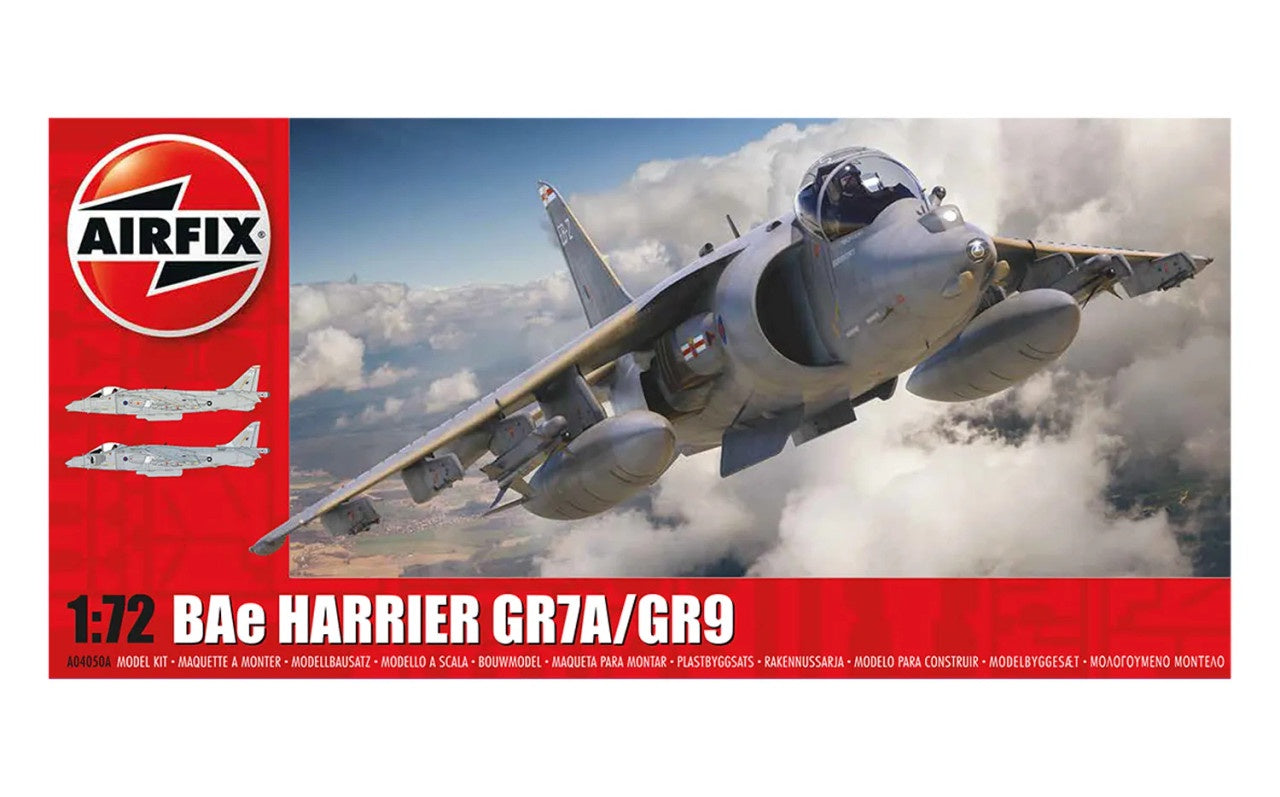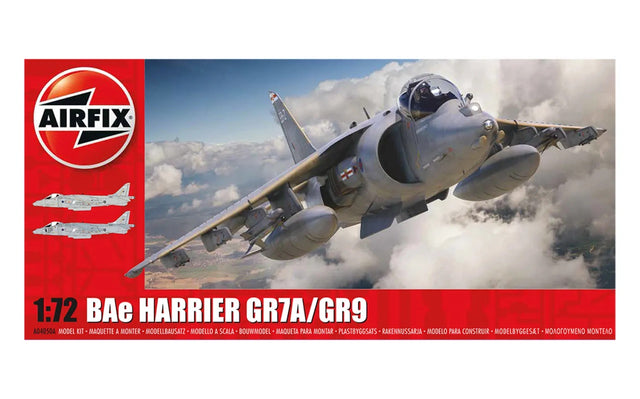Airfix 1:72 BAe Harrier GR7A/GR9 Kitset
Airfix 1:72 BAe Harrier GR7A/GR9 Kitset is backordered and will ship as soon as it is back in stock.
Couldn't load pickup availability
Delivery and Shipping
Delivery and Shipping
We use tracked courier for fast delivery New Zealand wide
Description
Description
The BAe Harrier is a British single-seat V / STOL fighter, attack and reconnaissance aircraft with a duralumin, half-shell structure. The origins of Harrier's construction can be found in 1957, when Lord Sydney Camm of Hawker Aircraft and Dr. Stanley Hooker of Bristol Siddeley Engines started the construction of a tactical aircraft using the latest turbo-fan engine from Bristol plants, then known as BS.53. It was specially adapted to the vertical thrust vector ensuring the vertical take-off of a fixed-wing aircraft. Engine exhaust gases were directed to four staggered nozzles placed in pairs at the front and rear of the fuselage. The range of rotation of the nozzles exceeded 90 degrees, which allowed the exhaust gases to be directed directly rearward in normal flight, vertically downward for take-off and landing, or to any angle during the transition phase. Around the engine, Camm constructed a compact, conventional, high-wing metal airframe. In the forward part of the fuselage there was a one-person cabin, next to which there were two fixed, stationary air inlets for engines with a semicircular cross-section. The two-wheeled main and one-wheeled undercarriages are built in tandem in the central axis of the fuselage. The first of the six prototypes took off for the first time on October 21, 1960. After less than a year, a complete transition was made from vertical climb to horizontal flight and hover again. In February 1965, the UK government ordered six test aircraft. These were the first examples to be given the name Harrier. Apart from Great Britain, the only user of the standard Harrier aircraft is the Spanish Navy, where the aircraft are known as the Matador. To date, a dozen or so versions of the Harrier aircraft have been produced. Chronologically, the first was the Harrier GR.1 (an attack aircraft that entered service in 1969). Version T.3 was created quickly, i.e. a two-person school version of Harrier GR.1. The next version is the Harrier GR.3, which is the most modern assault version of this aircraft equipped with Pegasus 11 Mk 103 engines. Since 1978, the version marked as Sea Harrier has also been produced, the FRS.MK.1 model of which distinguished itself during the Falklands war. in 1982 as a fighter attack aircraft. As a result of the experience gained from this war, the FA.2 version was created, which has better avionics, including a great Blue Vixen radar, greater payload and can use a wider range of weapons. Technical data (GR.3 version): length: 14.37m, wingspan: 7.6m, height: 3.42m, maximum speed: 1185km / h, maximum climb speed: 254m / s, combat radius: 420km, armament : fixed - not equipped, suspended - up to 3176 kg of load.
Payment & Security
Payment methods
Your payment information is processed securely. We do not store credit card details nor have access to your credit card information.



